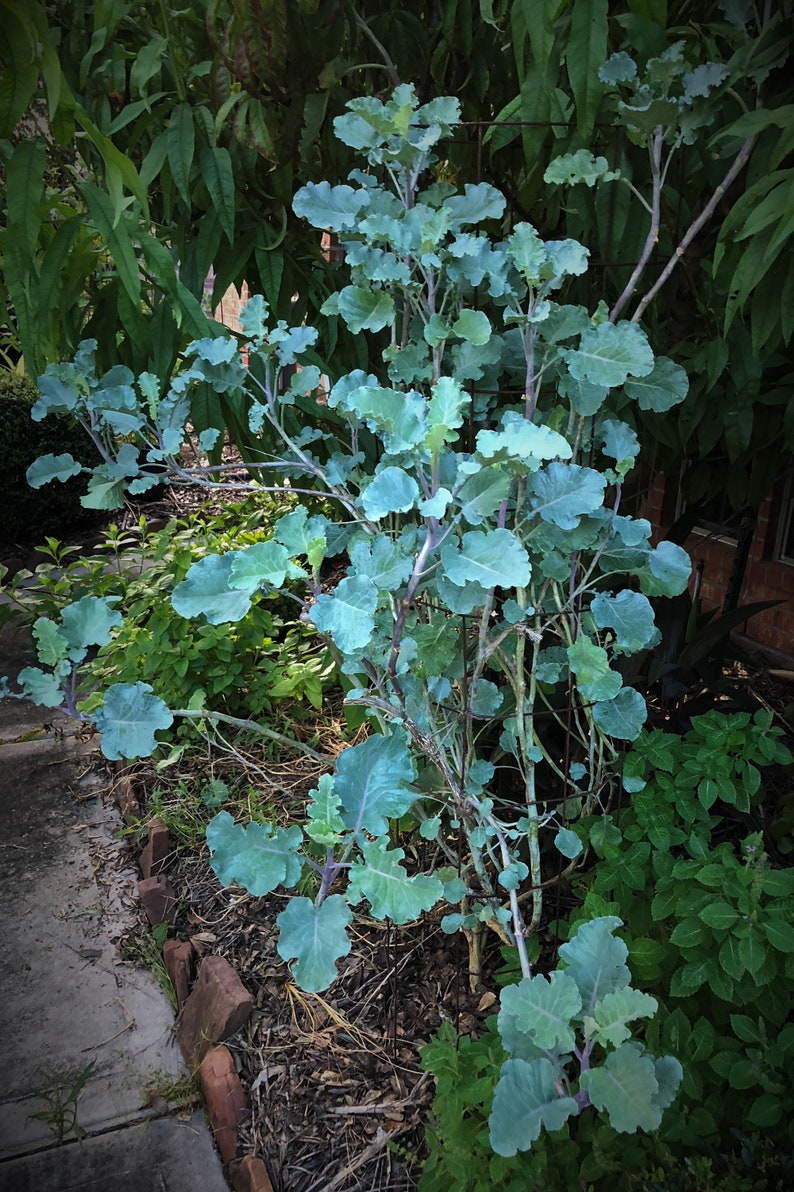

One of our local nurseries near where we live now sells them. And once you get a few established you can easily grow more from your own cuttings.Īnd depending on where you live you might be able to find them for sale locally. We got our 3 tree collards from this site. Purple, green, and even blue tree collards. Tree collards can be a bit hard to find but this site has a bunch of cuttings and rooted cuttings for sale including a mix of colors. If you’re ready to get started with purple tree collards then I highly recommend checking out the Project Tree Collard site (see the resources section for a link). I’m happy to help feed our local birds while also getting abundant harvests for my family and community.
#PURPLE TREE COLLARDS FULL#
We often see songbirds flitting about our tree collards coming out with beaks full of little green caterpillars. These plants grow so fast that there is plenty to share with the caterpillars.

Just a few plants really will help you cultivate abundance for people, plants, and wildlife.Īnd if you see some cabbage butterflies on them don’t worry about it. So are you excited to give purple tree collards a try? They’re fantastic perennial greens that are a great addition to any perennial food system. I just make sure to keep a cover over the pan until they soften up a bit.Īnd the leaves can get quite large-bigger than your hand. Just a word of warning-when cooked in a pan they’ve got the habit of popping a bit when they’re heating up. The flavor is a little different but we really like them. You can use tree collards in any recipe that calls for kale, collard greens, and even chard or spinach. We use them a lot as cooked greens but we also chop them up and use them with other greens in salads. Tree collards even taste better after a frost-the cold tends to sweeten the leaves a bit. Our purple tree collards are planted along the south side of our house and so far they’re thriving. So you can always take some cuttings inside in the fall just to be safe.Īnd with a little protection, you can keep them going outside in colder areas. If you get colder than 10 F then tree collards may die back without extra protection.īut purple tree collards are easy to root from cuttings. Here in USDA zone 8, they do fine and they should be able to handle zone 7 temperatures too if planted in a warm micro-climate. You will never run out of collard greens if you grow tree collards.īut purple tree collards aren’t the most cold-tolerant plants. Once established these plants just grow and grow. I pruned them back but they regrew with such abundance that I had to build a much larger and tougher trellis. Then in the 2 nd year, they just took off and quickly overwhelmed the trellis. I built a small simple trellis for them and called it good.Īnd for the 1 st year, it worked fine as the tree collards got established and slowly grew. It was hard to imagine them living up to their reputation for being tree-like.

Just a few inches high and only a couple of leaves on each. When I first got my purple tree collards they were so small.


 0 kommentar(er)
0 kommentar(er)
